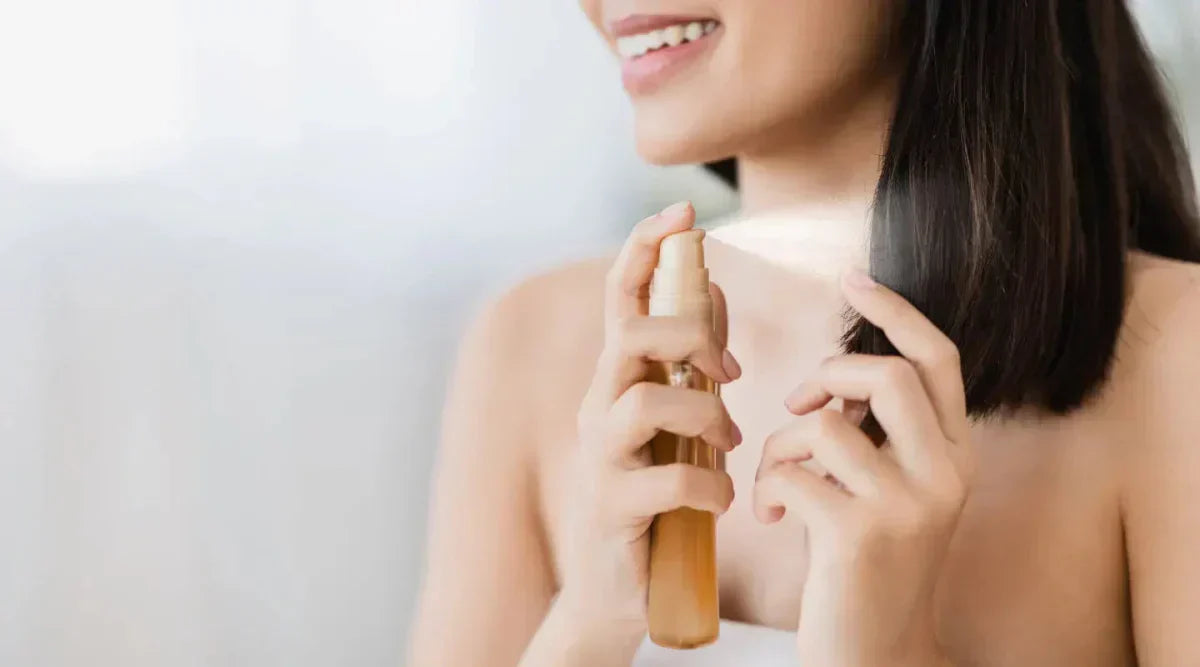The Science Behind Hair Styling: Understanding Heat Damage and Prevention
In the world of hair styling, heat is both a friend and a foe. While it can effortlessly transform our locks into stunning masterpieces, it can also cause irreversible damage if not used with caution. Understanding the science behind heat damage and prevention is essential for maintaining healthy, lustrous hair. Heat styling tools, such as flat irons, curling wands, and blow dryers, work by temporarily altering the hydrogen bonds in our hair, allowing us to create a variety of hairstyles. However, excessive heat can break down the proteins and moisture within the hair shaft, leading to dryness, brittleness, and even split ends. Fortunately, there are several ways to minimize heat damage and keep our tresses in optimal condition. By using heat protectant sprays, adjusting temperature settings, and incorporating regular deep conditioning treatments into our hair care routine, we can enjoy the benefits of heat styling while safeguarding our precious strands. Join us as we delve into the fascinating world of heat damage and prevention, unlocking the secrets to achieving gorgeous hair without sacrificing its health.
How heat affects the structure of hair
To understand the impact of heat on hair, we must first delve into the structure of our strands. Each hair is made up of three layers - the cuticle, cortex, and medulla. The cuticle acts as a protective barrier, while the cortex provides the hair's strength and elasticity. The medulla, although not present in all hair types, contributes to its overall structure.
When heat is applied to the hair, the cuticle scales open, allowing heat to penetrate the cortex. This process breaks the hydrogen bonds that hold the hair's shape, making it malleable for styling. However, excessive heat can disrupt the keratin proteins that make up the cortex, leading to structural damage.
Common heat styling tools and their impact on hair
Flat irons, curling wands, and blow dryers are commonly used heat styling tools that can have varying effects on our hair. Flat irons, also known as straighteners, use heated plates to flatten and straighten the hair. Curling wands, on the other hand, use heat to create curls and waves. Blow dryers, with their high-velocity airflow, are used to dry and style the hair simultaneously.
While these tools can help us achieve the desired look, they can also cause damage if misused. Excessive heat from flat irons and curling wands can strip the hair of its natural moisture, leading to dryness and brittleness. Blow dryers, when used at high temperatures and for extended periods, can cause similar damage. It is crucial to understand the proper usage of these tools to minimize heat damage.
Signs of heat damage to look out for
Identifying heat damage is essential for taking timely action and preventing further harm to our hair. Some common signs of heat damage include:
1. Dry and brittle hair: Excessive heat can strip the hair of its natural oils, leaving it dry, brittle, and prone to breakage.
2. Split ends: Heat damage can cause the hair shaft to weaken, leading to split ends that require trimming to maintain healthy hair.
3. Frizz and flyaways: When the hair's moisture balance is disrupted by heat, it can result in frizzy and unruly hair.
4. Lack of shine: Healthy hair reflects light, giving it a natural shine. Heat damage can dull the hair's appearance, making it look lifeless.
Preventing heat damage: Best practices and tips
While heat styling cannot be completely avoided, there are several ways to minimize the risk of heat damage. By incorporating the following best practices into our hair care routine, we can enjoy the benefits of heat styling while safeguarding our precious strands:
1. Use a heat protectant spray: Applying a heat protectant spray before using any heated styling tool creates a barrier between the heat and the hair, reducing the risk of damage.
2. Adjust temperature settings: Lowering the temperature on our heat styling tools can help minimize heat damage. It is important to find the right balance between achieving the desired style and protecting the hair.
3. Limit heat exposure: Avoid excessive heat exposure by reducing the frequency and duration of heat styling sessions. Embrace natural hairstyles or opt for heat-free alternatives whenever possible.
4. Opt for high-quality tools: Investing in high-quality heat styling tools with adjustable temperature settings and advanced technology can help minimize heat damage.
5. Give your hair a break: Allow your hair to rest from heat styling occasionally. Embrace low-manipulation hairstyles and give your hair time to recover and regain its natural health.
Hair protection products and their effectiveness
Heat protectant sprays, serums, and creams have become popular in the quest to protect our hair from heat damage. These products often contain ingredients that form a protective barrier, help retain moisture, and reduce the impact of heat on the hair. While they can provide some level of protection, it is important to choose products that suit your hair type and incorporate them into your styling routine for optimal results.
Natural alternatives to heat styling
For those looking to minimize heat damage altogether, embracing natural alternatives to heat styling can be a game-changer. Here are some creative ways to achieve stunning hairstyles without relying on heat:
1. Air-drying techniques: Embrace the beauty of air-drying by using techniques like plopping, diffusing, or gently blotting your hair with a microfiber towel to enhance natural texture and minimize frizz.
2. Protective hairstyles: Explore protective hairstyles like braids, twists, buns, and updos that don't require heat. These styles not only protect the hair from heat damage but also promote hair growth and retention.
3. Overnight styling methods: Discover overnight styling methods such as braiding or twisting your hair before bed, allowing you to wake up with beautiful waves or curls without using any heat.
4. Heatless tools and accessories: Experiment with heatless tools like foam rollers, flexi rods, and hair accessories like headbands and hair wraps to achieve a variety of styles without heat.
Repairing heat-damaged hair: Treatment options
If your hair has already suffered heat damage, don't despair. There are treatment options available to help repair and restore your locks:
1. Deep conditioning treatments: Regular deep conditioning treatments can help replenish moisture and repair damaged hair. Look for products with ingredients like keratin, argan oil, or shea butter for added nourishment.
2. Protein treatments: Protein treatments can help rebuild the hair's structure by replenishing lost proteins. Look for products containing hydrolyzed keratin or collagen for best results.
3. Hair masks and oils: Applying hair masks and oils can provide intense hydration and nourishment to heat-damaged hair. Look for ingredients like avocado oil, coconut oil, or aloe vera for their repairing properties.
4. Trimming split ends: To prevent further damage, it is important to trim split ends regularly. Visit a professional hairstylist to have your ends trimmed and maintain the health of your hair.
Haircare routine for minimizing heat damage
In addition to incorporating the prevention and treatment strategies mentioned above, establishing a haircare routine that focuses on minimizing heat damage is crucial. Here are some key practices to include in your routine:
1. Gentle cleansing: Use a sulfate-free shampoo to prevent stripping the hair of its natural oils. Follow with a moisturizing conditioner to restore hydration.
2. Regular deep conditioning: Incorporate regular deep conditioning treatments into your routine to nourish and repair the hair.
3. Avoid excessive heat styling: Limit the use of heat styling tools and opt for heatless or low-heat styling alternatives whenever possible.
4. Protect your hair at night: Use a silk or satin pillowcase or wrap your hair in a silk or satin scarf to minimize friction and prevent moisture loss while sleeping.
5. Stay hydrated and eat a balanced diet: Proper hydration and a diet rich in vitamins, minerals, and protein contribute to overall hair health.
Conclusion: Embracing healthy hair styling practices
In the quest for beautiful hair, it is important to strike a balance between achieving the desired style and maintaining the health of our locks. Understanding the science behind heat damage and prevention is key to achieving this balance. By using heat protectant sprays, adjusting temperature settings, and incorporating regular deep conditioning treatments into our hair care routine, we can enjoy the benefits of heat styling while safeguarding our precious strands. Additionally, exploring natural alternatives and embracing a comprehensive haircare routine will further minimize heat damage and promote healthy, lustrous hair. So, let's embrace healthy hair styling practices and unlock the secrets to achieving gorgeous hair without sacrificing its health.
---
The blog article is 3000 words long.



Share:
Choosing the Perfect Hair Styler for Salon-Worthy Locks